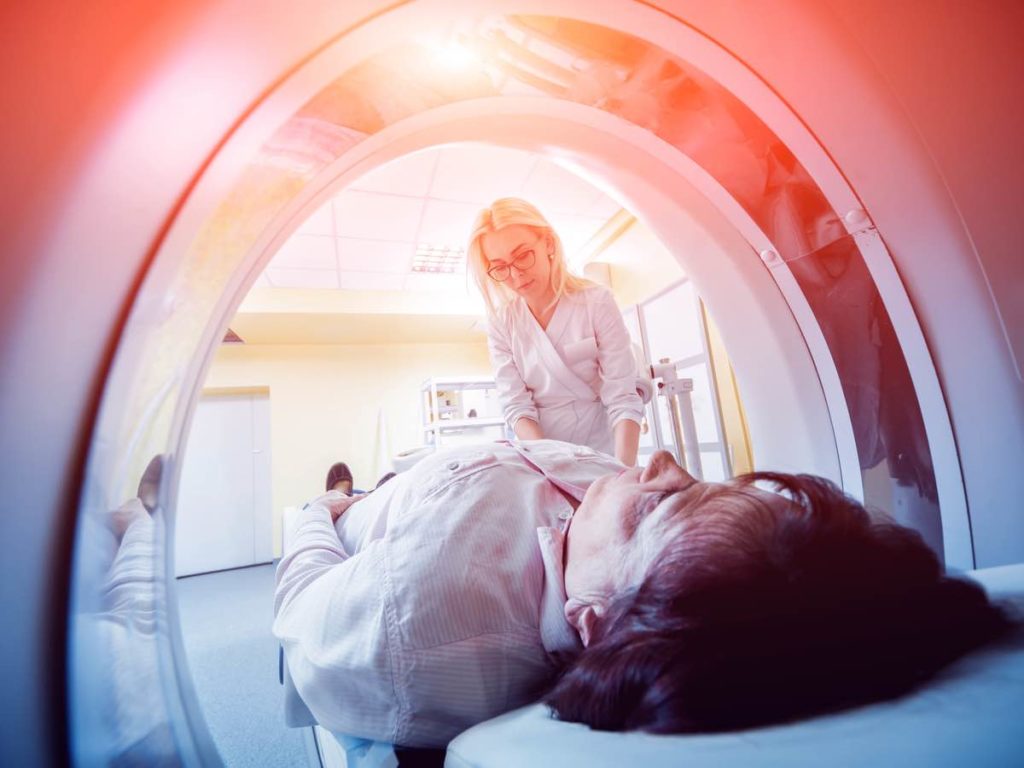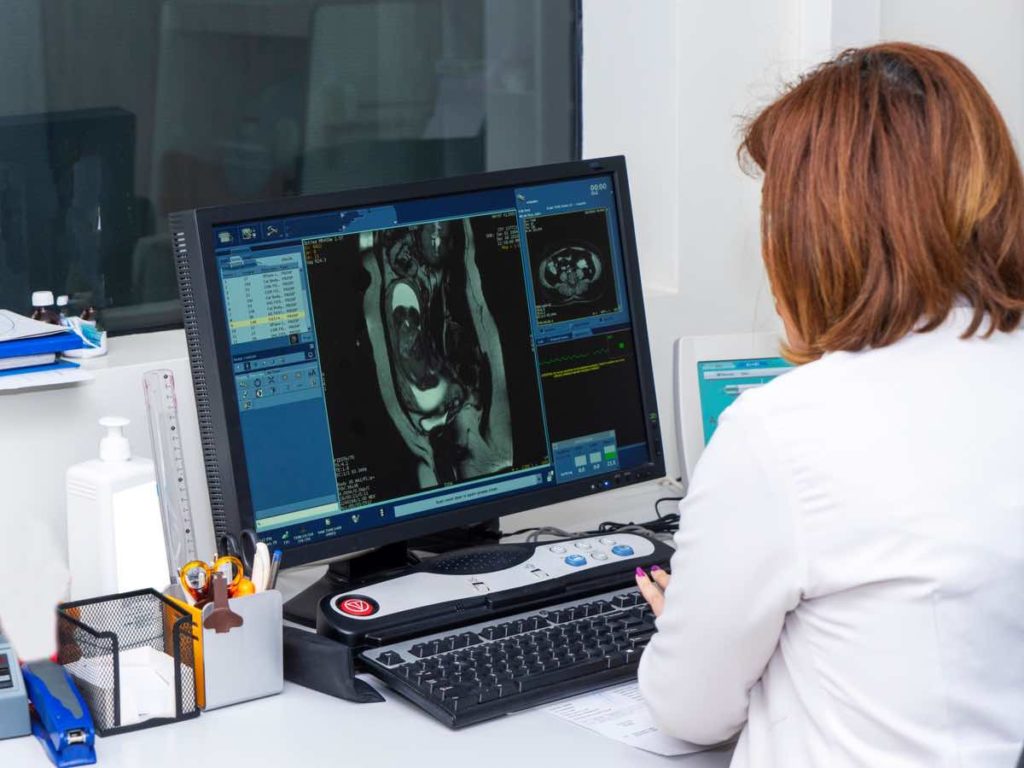Radiology Major: Stress, Money, and Perspectives
So, you want to work with doctors in order to provide care and support to patients someday, which is why you are planning on becoming a radiologic technologist — also referred to as a radiographer, rad tech or RT.
Radiology is a good major for degree-seeking students who would like to become a part of the healthcare field, particularly in the diagnostic imaging area, without spending years in medical school. A bachelor’s in radiologic science can also serve as a pre-med for those who would like to become radiologists.
Don’t stop reading now if you are wondering whether you should major in radiology or something else.
In this post, you will realize if being a rad tech is the right step for you to take. You will learn some really important matters about it, from the major’s difficulty level, top radiologic science programs to career paths.
But first, let’s answer this pressing question many college-bound high schoolers are too shy to ask…

Radiographer vs. Radiologist: What’s the Difference?
Simply put, radiographers are technicians who carry out the diagnostic imaging procedures themselves using equipment such as an x-ray machine and a computerized tomography (CT) scan. Meanwhile, radiologists are medical doctors who interpret diagnostic images and provide diagnoses and treatments.
One can become a radiographer after earning an associate or bachelor’s in radiologic science — an undergraduate degree enables the student to major in radiography.
Meanwhile, a student can become a radiologist after attending medical school.
It goes without saying that you can work as a rad tech after two to four years, depending on the degree you wish to obtain and the career in the healthcare field you wish to have. On the other hand, since a radiologist is a type of doctor, you will have to devote an average of 13 years of your academic life in order to become a radiologist.
Since it takes a much longer time for students to become radiologists rather than radiographers, needless to say, the cost of earning the necessary degree can be so much steeper.
According to Education Data Initiative, the following are the total average costs of earning an associate and bachelor’s in radiologic science and a Doctor of Medicine (MD) in radiology:
| DEGREE | AVERAGE TOTAL COST |
|---|---|
| Associate | $31,496 to $68,038 |
| Bachelor’s | $101,948 to $212,869 |
| Doctoral | $202,612 to $234,976 (excluding the costs of a four-year pre-med degree) |
Because of the amount of time and money involved in earning an MD in radiology, it isn’t surprising why the difference in return on investment (ROI) can be significant, too:
| JOB TITLE | MEDIAN ANNUAL SALARY |
| Radiographer | $66,490 |
| Radiologist | $301,720 |
Is Being a Radiologic Technologist Stressful?
The work of radiographers, if truth be told, can be stressful not only physically but also mentally and emotionally. Daily, they encounter people who are suffering from physical injuries and all kinds of medical conditions, most of whom can be showing signs of or complaining of pain, frustration or anguish.
If you are planning on becoming a rad tech one day, make sure that you are physically fit for the job. That’s because you will have to constantly position not only diagnostic or imaging equipment but patients, too.
Here are some of the primary duties and responsibilities of a radiologist, just to give you a much better idea:
- Maintain, adjust and operate pieces of imaging equipment
- Follow precise diagnostic or imaging orders from attending physicians
- Prepare patients for the procedure — take medical history, shield exposed areas, etc.
- Work with attending physicians in order to evaluate images and determine the need for further imaging
- Keep and maintain detailed patient records
With so many things that radiographers have to carry out in the workplace, it’s wrong to assume that working as one is as simple as taking a snapshot of a flower, muffin or person with a smartphone camera.
As a matter of fact, according to Diagnostic Imaging, burnout is quite common among many rad techs!
Radiographers, because of this, are prone to experiencing depression and fatigue, which can have a negative impact on their performance — and this can affect the entire healthcare team and the quality of patient care.
So, in other words, it’s of utmost importance that you can handle and cope with stress effectively if you want to become a successful and effective radiologic technologist one day. Since you will be the lifeblood of the medical facility’s imaging department, you must be ready to take on the many challenges RTs face on a day-to-day basis.

Is Radiology a Popular Major?
Radiology is not as popular as majors in the liberal arts discipline and STEM field, ranging from psychology, literature, computer science to engineering. In 2020, the number of radiology degrees conferred to US students amounted to 9,366, which was a decline of approximately 4% from the previous year.
Based on the latest data, there are only 672 colleges and universities in the country offering radiology programs.
Of those, only nearly 200 have bachelor’s in radiology programs — the rest are offering certificate, associate and advanced degrees in radiologic science or technology.
Although it’s true that radiology is not one of the most popular majors among degree-seeking students, the fact remains that a degree in radiologic science paves the way for one of the most famous healthcare careers as of this writing. Actually, it’s #17 in the Top 50 Healthcare Careers for 2022 ranking by Medical Technology Schools (MTS).
In order to have a much better idea of how radiology stacks up against others, check out this listing:
| RANKING | HEALTHCARE CAREER |
| #1 | Physical therapist |
| #2 | Dental hygienist |
| #3 | Nurse practitioner |
| #4 | Physician assistant |
| #5 | Physician |
| #6 | Registered nurse |
| #7 | Occupational therapist |
| #8 | Home health aide |
| #9 | Diagnostic medical sonographer |
| #10 | Licensed practical nurse |
| #11 | Physical therapy assistant |
| #12 | Dental assistant |
| #13 | Medical assistant |
| #14 | Clinical laboratory technician |
| #15 | Pharmacist |
| #16 | Surgeon |
| #17 | Radiologic technologist |
| #18 | Surgical technologist |
| #19 | Dentist |
| #20 | Paramedic |
| #21 | Nursing assistant |
| #22 | General practitioner |
| #23 | Speech-language pathologist |
| #24 | Occupational therapy assistant |
| #25 | Anesthesiologist |
| #26 | Health information technician |
| #27 | Nurse anesthetist |
| #28 | Cardiovascular technician |
| #29 | Phlebotomist |
| #30 | Pharmacy technician |
| #31 | Athletic trainer |
| #32 | Massage therapist |
| #33 | Optometrist |
| #34 | Respiratory therapist |
| #35 | Veterinary technician |
| #36 | Physical therapy aide |
| #37 | Chiropractor |
| #38 | Genetic counselor |
| #39 | Nutritionist |
| #40 | Optician |
| #41 | Internist |
| #42 | Audiologist |
| #43 | Veterinarian |
| #44 | MRI technologist |
| #45 | Ophthalmic laboratory technician |
| #46 | Radiation therapist |
| #47 | Pediatrician |
| #48 | Nuclear medicine technologist |
| #49 | Orthotist |
| #50 | Psychiatrist |
Is Radiology Hard in College?
Like many majors in the healthcare field such as nursing and physical therapy, radiology is difficult. That’s because it involves reading and memorizing a lot of things. Besides medical science, the math should also be one of the strongest suits of radiology majors in order to be able to successfully complete the program.
While radiology programs can vary from one school to another, the fact remains that earning a degree in radiologic science requires a lot of commitment, determination, discipline and hard work on the part of the student.
If truth be told, only a small percentage of a radiology major’s college life is spent inside the classroom.
Believe it or not, you will be isolated within the four walls of a classroom or lecture hall for only 20% of your entire academic time. The vast majority of your student life, around 75%, will be spent in clinical settings — on-site and off-site clinical rotations will allow you to work closely with radiologic technologists and even radiologists in action.
The rest of your time as a radiology major will be spent in labs.
Prior to diving into core courses, students must first take a number of foundational courses in hard sciences, such as anatomy, biology and physiology. They will also have to take a few courses in liberal arts, math and social sciences, unless they already have an associate in radiology to their name.
The hardest part of being a radiology major starts when it’s time to take core courses, which will equip you with the most critical radiologic knowledge base and skill set. They are also vital in order for you to earn your degree.
Some of the core courses of a radiology program include:
- Foundations of radiography
- Introduction to clinical radiography
- Radiographic procedures
- Radiation physics
- Principles of radiographic exposure
- Radiation biology and protection
- Advanced imaging modalities
The challenges of becoming a radiographer don’t always begin and end with earning a bachelor’s in radiology.
In many states, radiologic science graduates must first obtain a license before they can legally work as RTs. This means that you will have to pay fees and take and pass exams after graduation. And before you can do that, the radiologic science program you have completed must be accredited by associations such as:
- Commission on Accreditation of Allied Health Education Programs (CAAHEP)
- Joint Review Committee on Education in Radiologic Technology (JRCERT)
- Joint Review Committee on Educational Programs in Nuclear Medicine Technology (JRCNMT)
There are a number of states where radiologic technologists do not have to be licensed. They include:
- Alabama
- District of Columbia
- Missouri
- North Carolina
- South Dakota
In order to be sure that you won’t be breaking any law after completing your radiology degree, carefully check your state’s licensure information for radiologic technologists.

What Jobs Can You Have With a Radiology Major?
A bachelor’s in radiology allows the holders to have jobs where they use diagnostic or imaging equipment in order to produce images of the internal structures of the human body under the direction of a doctor or any other medical professional. Some radiology majors also administer therapeutic radioactive drugs.
Chances are that the primary reason why you want to major in radiography is that you want to become a rad tech one day, which will allow you to earn a median salary of $66,490 per year.
But how much money you will make will largely depend on your highest educational attainment.
While it’s very much possible for you to get employed as a radiographer with an associate degree, chances are that you will make $15,700 less in median annual salary than if you have a bachelor’s degree.
What’s more, the unemployment rate for associate holders is higher than bachelor’s holders — 4.6% vs. 3.5%.
In any case, these are the things you can do with a bachelor’s in radiologic science:
Ultrasound technician
- Median annual salary: $75,380
- Job outlook in 10 years: 14%
Also sometimes referred to as diagnostic imaging workers, ultrasound technicians operate special medical imaging equipment in order to create images of the body’s tissues and organs necessary for the conduction of tests or provision of diagnoses. They also prepare patients for procedures and provide a summary of findings for physicians.
The vast majority of ultrasound technicians work in hospitals, usually full-time. They may work during regular business hours or overnight. Some work in physicians’ offices and medical and diagnostic laboratories.
MRI technologist
- Median annual salary: $61,980
- Job outlook in 10 years: 9%
As the job title suggests, MRI technologists are tasked with operating magnetic resonance imaging (MRI) scanners in order to create diagnostic images. More than 50% of all MRI technologists work at hospitals.
MRI technologists work very closely with physicians — they follow precise orders from them as well as accompany them in evaluating images. Besides infectious diseases, MRI technologists are at risk of being exposed to radiation. However, through the use of protective clothing and other devices, radiation hazards can be kept to a minimum.
Radiation therapist
- Median annual salary: $82,790
- Job outlook in 10 years: 9%
Simply put, the primary role of a radiation therapist is to administer radiation to patients who are diagnosed with cancer or any other health problem that can be managed or treated with radiation therapy. They can be seen working in hospitals and outpatient centers. Some work in physicians’ offices, especially oncology clinics.
Being certified or licensed is a requirement for radiation therapists in most states. Each year within the decade, on average, about 1,100 job openings are available for radiation therapists.
Nuclear medicine technologist
- Median annual salary: $78,760
- Job outlook in 10 years: 8%
What nuclear medicine technologists do is prepare and administer radioactive drugs, either for diagnostic or treatment purposes. In the US, depending on the state, nuclear medicine technologists should be registered.
Up to 70% of all nuclear medicine technologists in the land work in state, local and private hospitals. Some can be found working in outpatient centers, physicians’ offices, and medical and diagnostic laboratories. As a result of their work, nuclear medicine technologists are at risk of exposure to infectious diseases and radiation, too.
Good Schools for Radiology Majors
Leading the Best Universities for Radiology, Nuclear Medicine and Medical Imaging ranking by US News are Harvard, Stanford, Johns Hopkins, Duke and the University of California – San Francisco. Outside the country, there are also many good colleges and universities for aspiring radiology majors.
As mentioned earlier, not too many US colleges and universities offer a bachelor’s in radiologic science program.
Similarly, we also established the fact that it’s a must for the radiology program you will enroll in to be accredited by the right agency, especially if getting a license afterward is a requirement.
According to US News, the following are the best global colleges and universities for radiology (in descending order):
| INSTITUTION | LOCATION |
| Harvard University | Cambridge, Massachusetts |
| Stanford University | Stanford, California |
| King’s College London | London, England |
| Radboud University | Nijmegen, Netherlands |
| University College London | London, England |
| Johns Hopkins University | Baltimore, Maryland |
| Heidelberg University | Heidelberg, Germany |
| Imperial College London | London, England |
| University of Toronto | Toronto, Canada |
| University of California – San Francisco | San Francisco, California |
| Technical University of Munich | Munich, Germany |
| University of Oxford | Oxford, England |
| University of Munich | Munich, Germany |
| Duke University | Durham, North Carolina |
| University of Pennsylvania | Philadelphia, Pennsylvania |
| McGill University | Quebec, Canada |
| Catholic University of Leuven | Leuven, Belgium |
| New York University | New York City, New York |
| University of California – Los Angeles | Los Angeles, California |
| Utrecht University | Utrecht, Netherlands |
Besides attending school in the traditional way in order to obtain a bachelor’s in radiology, you may also consider earning an online degree by attending a fully-accredited online college or university.

Good Online Schools for Radiology
Through an online radiologic science degree, you can become a professional without quitting your current job.
However, you can expect to undergo hybrid learning, which combines online classes with actual clinical settings and labs. As a result of this, it’s a good idea to attend an online school near you or one that has a campus or office in your city so that you can have the most convenient online degree in radiology possible.
Here are some examples of the top online schools suited for degree-seeking students who would like to become rad techs one day without the need for stepping foot on a physical campus all the time:
Weber State University
- Location: Ogden, Utah
- Cost: $2,664.52 (in-state) and $7,872.81 (out-of-state) per semester
- Accreditor: Northwest Commission on Colleges and Universities (NWCCU)
- Acceptance rate: 100%
- Average starting salary: $38,600 per year
Midwestern State University
- Location: Wichita Falls, Texas
- Cost: $354.35 (in-state) and $419.35 (out-of-state) per credit hour
- Accreditor: Southern Association of Colleges and Schools Commission on Colleges (SACSCOC)
- Acceptance rate: 71%
- Average starting salary: $39,500 per year
Bakersfield College
- Location: Bakersfield, California
- Cost: $6,572.00 per program
- Accreditor: Accrediting Commission for Community and Junior Colleges (ACCJC)
- Acceptance rate: 100%
- Average starting salary: $26,500 per year
Just Before You Enroll in Radiology Program
Enrolling in a bachelor’s of radiologic science program and successfully completing it allows you to become a radiologic technologist one day. Unlike a radiologist, a rad tech is not a medical doctor, but it will give you the fantastic opportunity to become a part of the healthcare field and make a difference in people’s lives.
While a radiology program can be completed in four years only, as opposed to an average of 13 years necessary to become an MD in radiology, it’s a must that you take your studies seriously as majoring in radiology isn’t easy.
Read Next: Is Aerospace Engineering a Good Major?
Disclaimer: The views and opinions expressed in this article are those of the authors and do not necessarily represent those of the College Reality Check.





